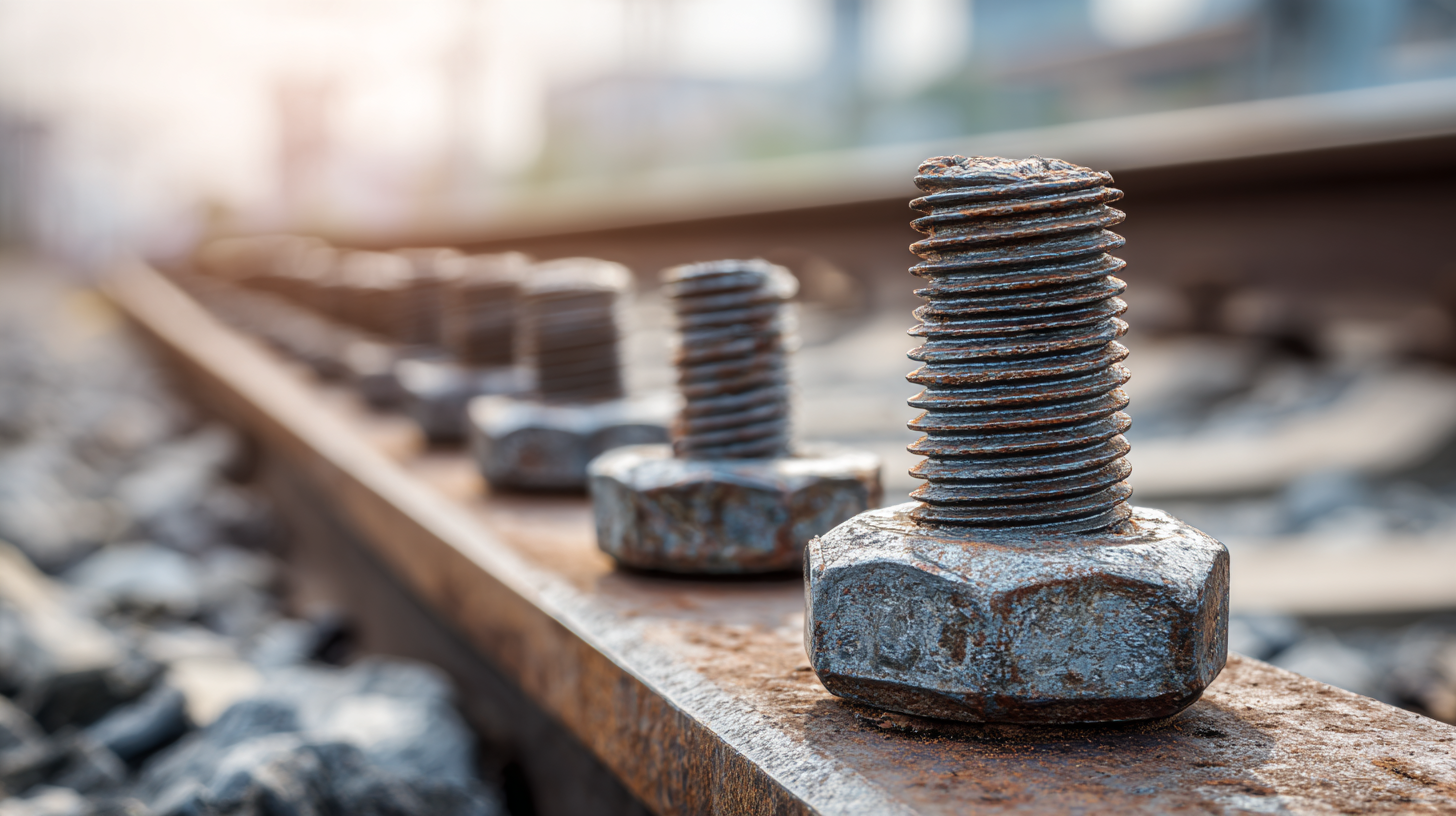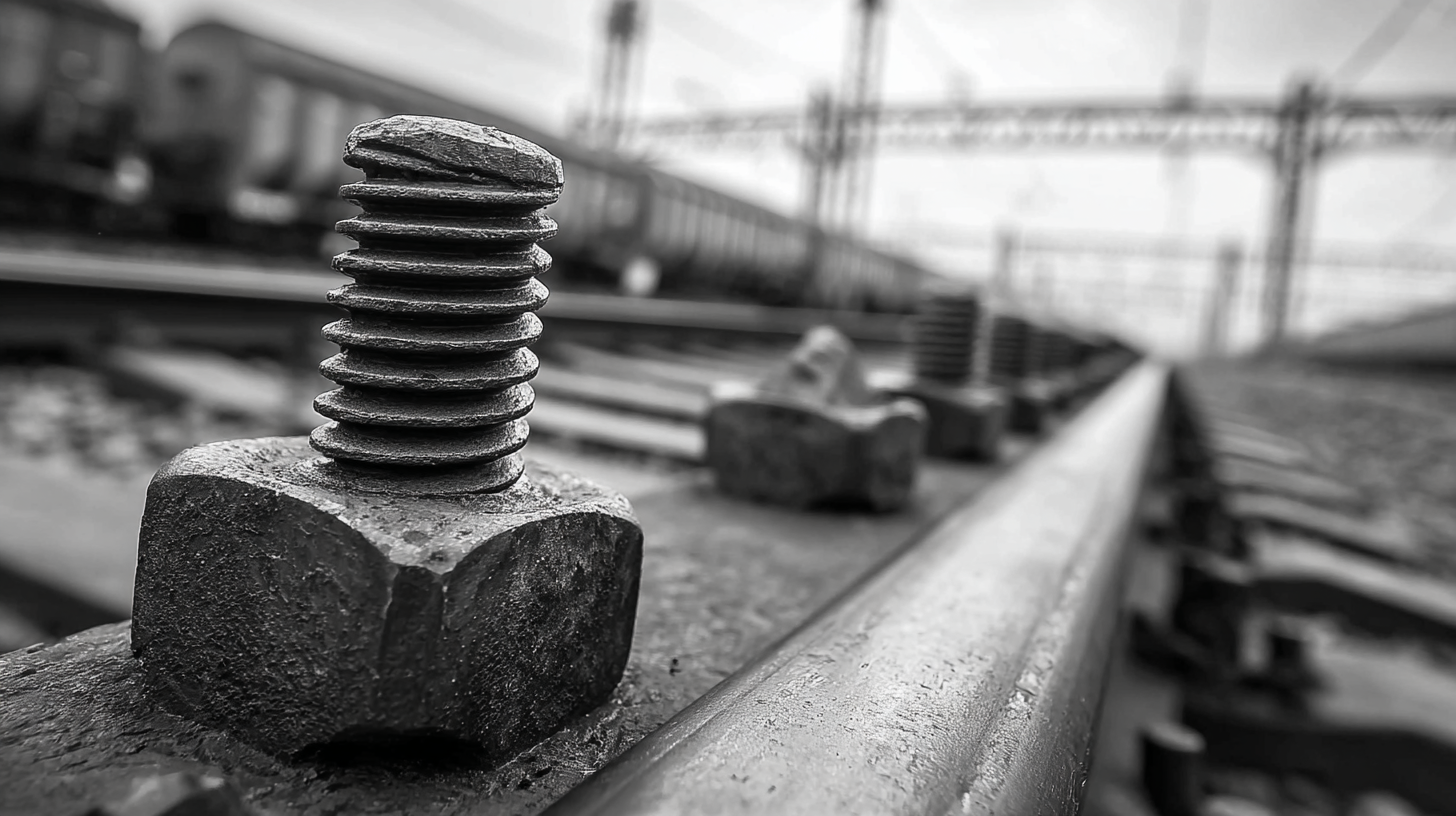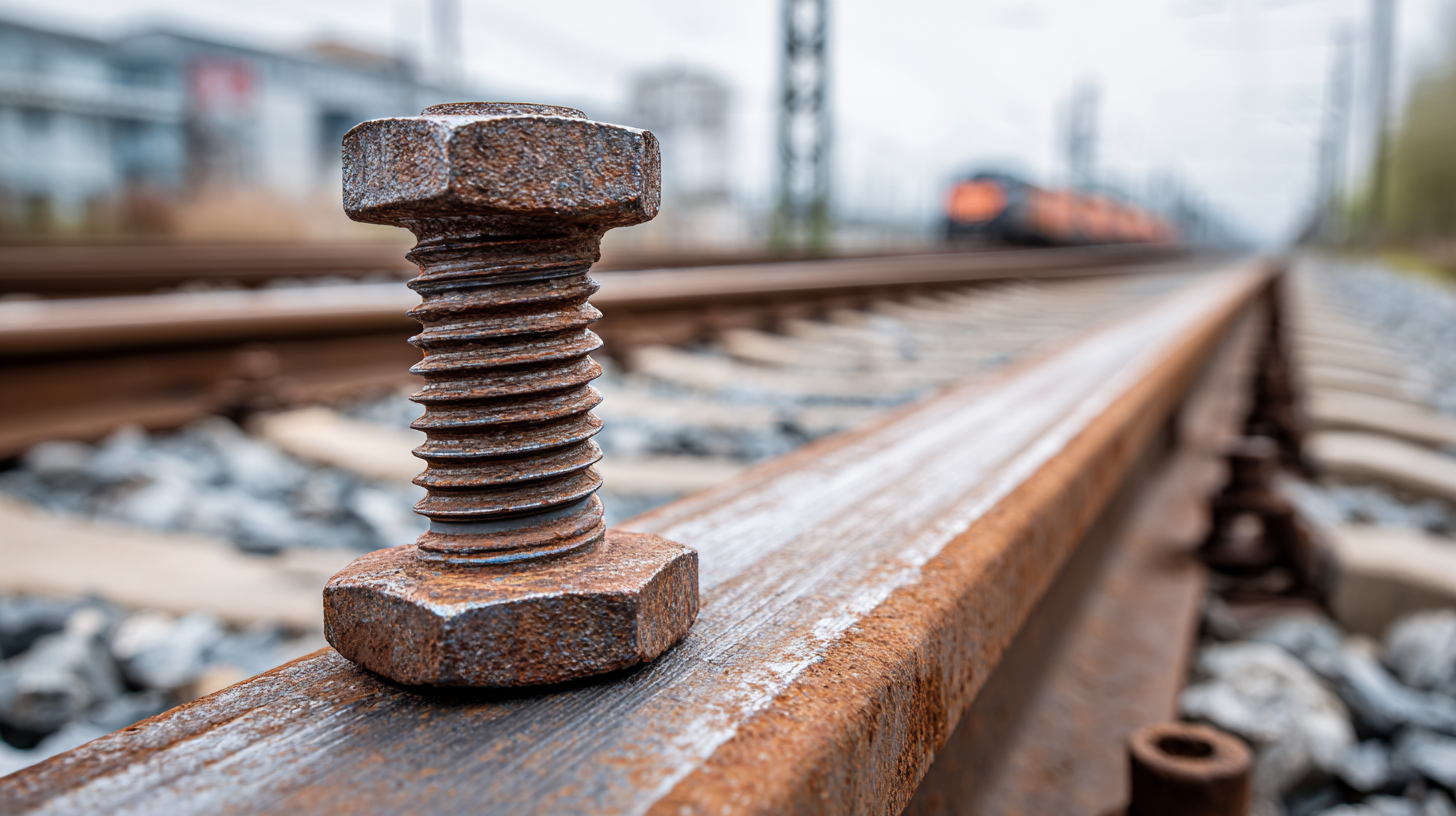The evolution of railroad bolt technology has been a cornerstone in enhancing the safety and efficiency of modern rail systems. As the backbone of railway infrastructure, railroad bolts are integral components that secure the tracks in place, ensuring smooth and reliable train operations. According to Dr. Emily Hartman, a renowned expert in rail engineering, "The advancements in railroad bolt technology not only improve structural integrity but also reduce maintenance costs significantly." This observation highlights the crucial role that innovation in this area plays in the broader context of rail system reliability and longevity.

In recent decades, the industry has witnessed substantial transformations, with the introduction of new materials, manufacturing processes, and design techniques that optimize the performance of railroad bolts. These advancements have a direct impact on operational efficiency, as well as on safety standards, which are paramount in today’s fast-paced transportation environment. By examining the historical development and the state-of-the-art technologies in railroad bolt design, we can appreciate how these minor yet vital components contribute to the overall framework of modern railways.
Ultimately, the evolution of railroad bolt technology exemplifies the interplay between engineering advancements and practical applications in rail systems. As we delve deeper into this topic, it becomes apparent that continuous innovation is essential for meeting the ever-growing demands of the transportation sector while ensuring the reliability and safety of rail travel.
The historical development of railroad bolt technology is a fascinating journey that reflects the evolution of railway infrastructure. Since the early days of rail transport, bolts have played a critical role in ensuring the safety and stability of rail systems. Initially crafted from wrought iron, these fasteners have progressed significantly with advancements in materials science. Today’s railroad bolts are typically made from high-strength steel alloys, designed to withstand the immense stresses placed upon them by heavy freight and passenger trains.
In China, the impact of these technological advancements is evident in the extensive high-speed rail network that spans over 30,000 kilometers. As of the end of 2019, China’s railway operating mileage reached approximately 139,000 kilometers, showcasing its critical role in the nation's transportation infrastructure. Studies indicate that the modern railroad bolt, with its superior tensile strength and corrosion resistance, contributes significantly to the overall durability and longevity of rail systems, allowing for faster and more reliable service. With ongoing research and development, the railroad bolt technology continues to evolve, impacting not only safety and efficiency but also the broader context of sustainable transportation solutions.
The evolution of railroad bolt technology has significantly influenced modern rail systems, primarily through key innovations in bolt design and materials. Initially, traditional bolts were made of steel, which provided sufficient strength but was prone to corrosion and fatigue over time. As the demand for more durable and reliable rail infrastructure grew, advancements in materials science began to play a crucial role. The introduction of high-strength alloy steels, along with protective coatings, drastically improved the lifespan and performance of bolts, reducing maintenance costs and enhancing safety.
Moreover, the integration of smart technology into bolt design represents a turning point in the railway industry. Emerging technologies such as piezoresistive pressure-sensitive layers allow for real-time monitoring of bolt integrity, ensuring that any loosening or failure can be detected before it leads to catastrophic issues. These innovations, powered by AI and advanced sensor technology, not only enhance the reliability of rail systems but also pave the way for predictive maintenance strategies, which can further optimize performance and safety in rail operations.

The advancement of bolt technology has significantly influenced the safety and reliability of modern rail systems. Precision in bolt fastening serves as a critical factor, with recent studies indicating that even minor variations in torque can affect the structural integrity of rail tracks. For instance, a predictive model for frictional torque in bolt fastening on coated steel has shown improvements in load-bearing capacity, demonstrating that enhanced bolt technology can directly mitigate risks associated with rail operations. This translates to fewer accidents and better risk management overall.

Implementing advanced bolt solutions provides a pathway to optimize maintenance workflows as well. By utilizing digital analysis tools, rail systems can better monitor bolt performance, ensuring that preventative measures are taken before issues arise. According to industry reports, fasteners account for about 30% of the failure modes in rail systems, highlighting the need for quality assurance and constant innovation in bolt technology.
Tip: Regular inspections of bolt integrity and the use of predictive maintenance strategies can greatly enhance safety in rail operations. Embracing smart technologies will allow for real-time monitoring, which can improve the reliability of rail infrastructure. Always consider the lifespan and wear of bolts, as these factors play a crucial role in maintaining the overall safety of rail systems.
Modern manufacturing techniques have significantly transformed the production of railroad fasteners, such as bolts and spikes, ensuring enhanced safety and efficiency in rail systems. Advanced technologies, including computer numerical control (CNC) machining and automated assembly lines, have dramatically improved precision in the manufacturing process. This precision not only optimizes the fit and function of fasteners but also reduces the margin for error, leading to longer-lasting components that can withstand the rigors of heavy rail traffic.
Tips for manufacturers looking to optimize their fastener production include adopting quality control measures at every stage of the manufacturing process. Employing real-time monitoring systems can help identify defects or inconsistencies early, thereby reducing waste and ensuring that only the best products reach the market. Additionally, investing in research and development is crucial; staying abreast of new materials and methods can lead to innovations that further enhance the safety and durability of railroad infrastructure.
Moreover, incorporating sustainability into manufacturing practices is becoming increasingly important. Utilizing recycled materials and implementing energy-efficient production methods not only meets regulatory requirements but also appeals to environmentally conscious stakeholders. These modern techniques are not just about enhancing the performance of railroad fasteners but also about contributing positively to the industry's overall sustainability.
As the demand for sustainable transportation solutions continues to grow, the railroad industry is increasingly focusing on the evolution of bolt technology to enhance the longevity and efficiency of rail systems. Innovations in materials science have led to the development of high-strength, corrosion-resistant bolts that not only improve safety but also extend the lifespan of rail infrastructure. These advancements are crucial in reducing maintenance costs and minimizing disruptions caused by equipment failure, ultimately contributing to a more sustainable rail network.
Future trends indicate a rising interest in eco-friendly manufacturing processes for railroad bolts. Techniques such as additive manufacturing and the use of recycled materials are being explored to minimize environmental impact. Furthermore, the integration of smart technology into bolt systems, such as sensors that monitor stress and fatigue, represents a significant step towards creating a more responsive rail infrastructure. These innovations are not only beneficial for operational efficiency but also align with global sustainability goals, setting a new standard for the railway industry as it moves towards a greener future.
